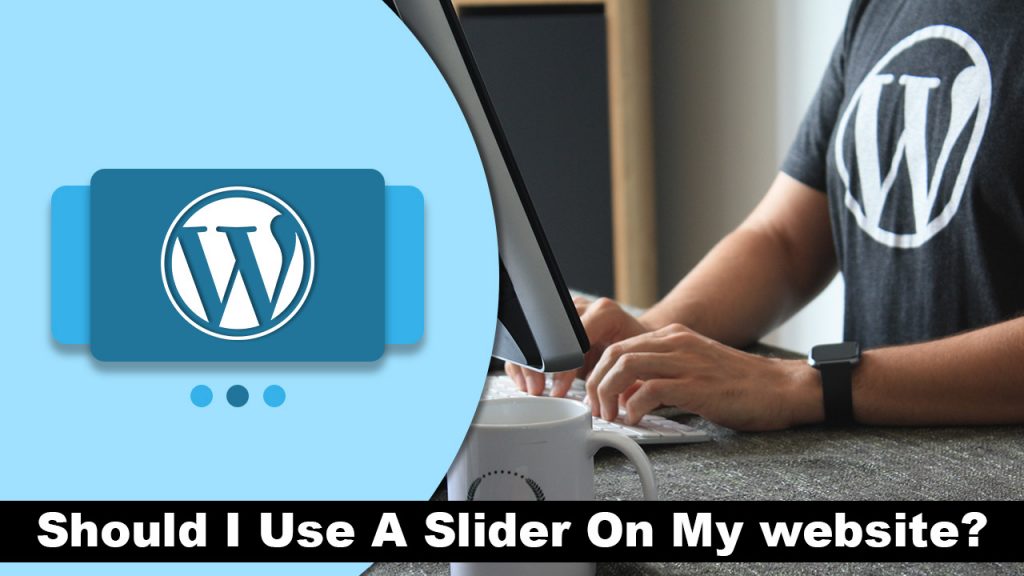
The internet has been abuzz with anti-slider blather lately. Sliders are awful! Your website is slow because of a slider! Sliders are bad for SEO! Here are a few of the most common arguments against sliders. The truth is, sliders are not awful – not if you know how to use them.
In the past, sliders were quite slow, unattractive, and difficult to use. The user experience design was hampered by these distractions. Since then, we’ve made great progress. In recent years, web design and development have changed dramatically, eradicating most of the arguments against sliders. With technology continuously improving, we are seeing beautiful sliders that perform well and benefit users as well.
Through slider plugins like Slider Factory, WordPress has made it even easier to add it to your website. With multiple layouts available, you can easily create an attractive image slider in just a few clicks.
What is a slider?
Sliders are sometimes referred to as slideshows or carousels because they show sequences of images. Most often, sliders appear on a homepage. Restaurant websites may use sliders to display different items on their menu, or travel websites may use sliders to display images from around the world. Sliders can rotate images automatically using a timer, or manually. As a result, the user can view each image at their own pace or skip the ones they don’t find interesting.
How Can Sliders Be Ineffective?
There are many criticisms against sliders, as previously mentioned. It is controversial whether or not websites should use slider images and why sliders are bad for websites among web design professionals.
Below, I’ve listed three reasons why sliders may not be effective.
1. Banner Blindness
Essentially, banner blindness occurs when website visitors mentally block information presented in banners (consciously or unconsciously). The user disregards certain page elements that may disrupt their user experience as a form of selective attention.
Most often, banner blindness occurs when the visitor is looking for specific information, and they don’t want ads to distract them. When someone visits a news website to get their daily fix on what’s going on around the world, their goal is to browse the daily headlines as soon as the page loads.
As a result, they are likely to scroll past the page’s banner portion, which is one of the main reasons sliders can be ineffective. No matter what the banner contains, it will not be noticed even if it isn’t an ad.
2. Slower loading time
Sliders, along with other elements on your page, the design, and the type of hosting server you use, can negatively impact your website’s speed.
A website’s loading time could be seriously impacted if sliders are used. They use high-resolution images, which is why they use high-resolution images. These large images are often loaded in parallel, resulting in page speed slowdowns and user frustration.
Research shows that a delay of just one second in page response can result in a drop in conversions of up to 7%. Consequently, if a slider increases your load time by two seconds, it can have detrimental effects on your conversions.
3. Usability problems
Sliders that don’t work well on mobile devices can cause serious usability problems. Many mobile users find it difficult to read image carousels designed for desktops.
The rotation of multiple images in many sliders can fill the entire screen, for instance. For a user-friendly mobile site to avoid including unnecessary bloat to web pages because mobile speed is critical for online sales.
Using sliders correctly can bring lots of benefits
With proper use, sliders can help you achieve great results for your website. Here are some of the benefits of using sliders appropriately.
1. Enhances The User Experience
If used strategically, sliders can enhance the user experience instead of becoming background noise. You can use them to present relevant information to your visitors in one convenient location. The slider of your website should contain everything your visitors need to know. They can easily search using it. As a result, visitors will be able to see if they need to explore your site more with the slider on your page. Using manual sliders will allow users to spend more time with the images or text they find interesting, further improving the user experience.
2. Appealing Visuals
An attractive and well-designed slider contributes to the overall appearance of your home page.
Considering that a lot of web users consider a website’s design to be an indication of credibility, a slider can help boost the visual appeal of your new blog website and encourage visitors to explore other pages of your website.
3. Display Textual Information Effectively
A slider can display text information on your website optimally as another benefit of having one. However, sliders can also be used to effectively display snippets of text, such as customer testimonials, reviews, calls to action, etc.
To raise awareness of your newest courses, for instance, and hopefully increase sales, you may want to use slides to showcase them in your business.
4. More Information In less space
Sliders allow you to include a lot of information in a small space. Slides expand their corresponding text and images only when they appear on the screen, allowing you to convey more information with less space.
In each slide, you can compress a lot of information, and website users can view the content at their convenience. If they find it useful, they can browse the rest of your website for more information. The slider image below conveys a lot of information in a small amount of space. The headline is eye-catching and conveys an important message quickly.
Conclusion
If you are asking yourself “Should I use a slider on my site? “, then hopefully this article answered your question. In this article, we have examined why sliders have acquired a bad reputation in the past, how they can be used effectively, as well as the advantages of using them correctly on your website.
